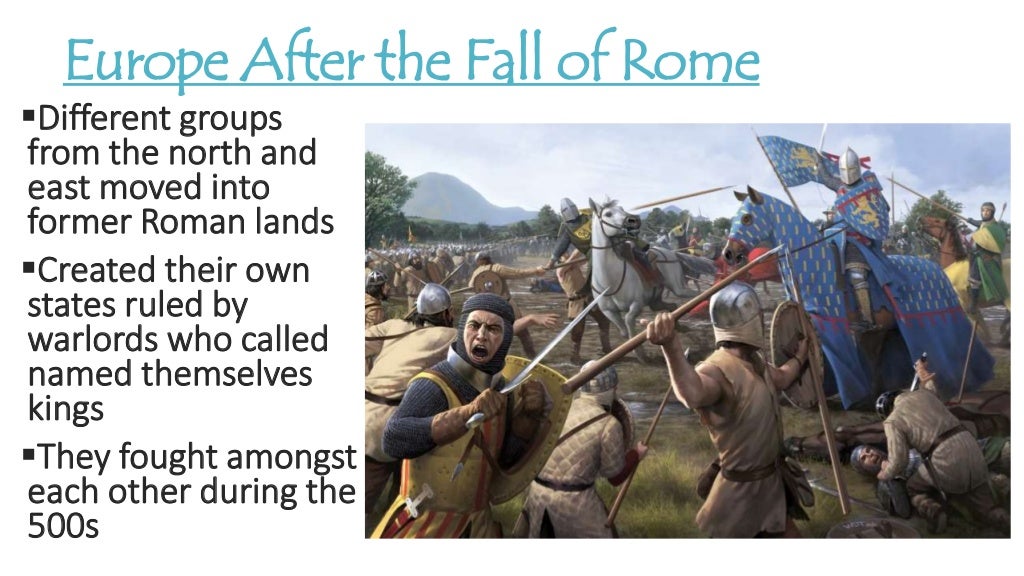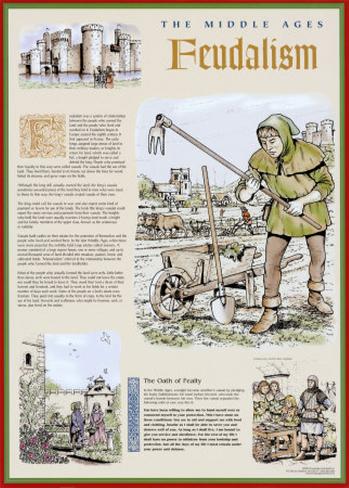
The granting of land (a fief or benefice) entailed service to the lord. At the top was the king while the knight or chevalier was found at the bottom. Some historians note that the feudal system was like a pyramid. By the 9th and into the 10th Century, those relationships governed detailed obligations, often over-lapping between various lords, and defined by property, law, and inheritance. Historian Steven Ozment states that, “As large numbers populated the countryside, there evolved that peculiar fusion of Germanic, Roman, and Christian practices that we speak of today as “feudal society.’” Feudalism represented the relationship between lord and vassal. But historical research demonstrated that the presuppositions governing the use of the term dark ages were false: Western Europe in the Early Middle Ages did experience a degree of learning trade had not ceased and law prevailed – albeit a legal system influenced by the Church, the barbarians, and scraps of Roman law. In rudimentary form, feudalism was a part of those dark ages. Hence, feudalism cannot be properly understood simply as a generalization or through the prism of independent historiography focusing solely on one aspect of the system.Ī partially relevant example might be the discarded use of the term “Dark Ages” to label the period of the Early Middle Ages. Attempting to Define the Feudal “System”įeudalism in France was different from feudalism in England, and this, according to medieval historians, may account for the eventual emergence of societies tied to different concepts of law, social relationships, and royal power. The notion of a feudal lord and his vassals, for example, is part of that overall system, although the specifics beyond generalizing must account for geographic differences as well as other factors. The so-called “feudal society,” however, can refer to various elements of that transformation period, including social relationships, the economic and legal systems, and the impact of Christian influences. Freeman may have been artisans who worked in or owned a store.Feudalism, as a generalization, describes those forces in Western Europe during a period of transformation following the dissolution of the Roman Empire. There were three types of peasants: Slaves, who could be bought and sold, serfs, who had no rights politically, and freeman, who had a few rights and sometimes owned small shares of land.

Peasants-The vast majority of the feudalist government system in the Middle Ages in Europe were made up of peasants. In exchange for the land the vassals were granted, they either had to pay money, rent out their land, provide military service, or perform other various duties to show loyalty to the monarch. Vassals-Vassals included anyone who was not a monarch and not a peasant who was granted land by the King or another vassal. The Lord is the ruling monarch who has complete control over all the land in the country. The Lord-The most important player in a feudal system is the Lord.

They were very poor, or, in the case of serfs, had no money. The peasants made up the majority of the population. The vassals were the nobleman who had been granted land by the monarch, and in exchange for that land provided military service or money. He was the monarch who controlled all of the land and people. The Lord was the overseer of the entire government. Though class played an important role in feudal society in the Middle Ages, the more important relationship in feudalism is between the Lord, the Vassal and the Peasant. This is known as “semi-feudal.” The term has also been brought up in discussions of non-Western societies today whose governments resemble the feudal system in medieval Europe, but this use of the term is often deemed inappropriate.

Feudalism is mainly used in discourse today as a comparison or analogical term applied to governmental structures in history.


 0 kommentar(er)
0 kommentar(er)
